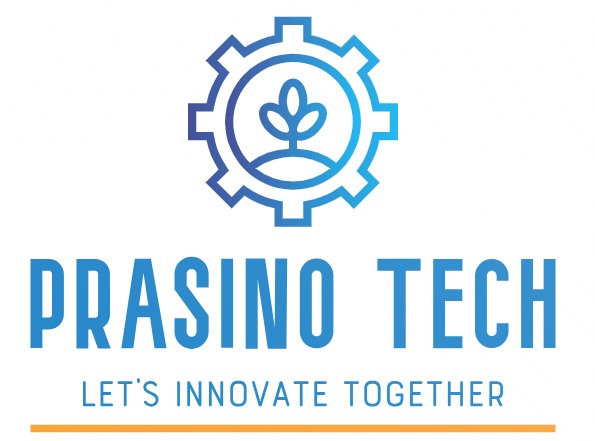In recent years, the urgency of addressing climate change has propelled the concept of “net zero” to the forefront of corporate sustainability goals. Achieving net zero emissions means balancing the amount of greenhouse gases emitted with the amount removed from the atmosphere. This ambitious target is not just a visionary dream; it is a necessity for ensuring a sustainable future. However, reaching net zero requires a multifaceted approach, involving innovation, commitment, and collaboration across all sectors of society.
Understanding the Net Zero Objective
Net zero is achieved when the amount of greenhouse gases emitted is equal to the amount removed from the atmosphere. This can be accomplished through various strategies:
- Reducing Emissions: The primary focus should be on reducing emissions at the source. This includes transitioning to renewable energy, improving energy efficiency, and adopting sustainable practices in manufacturing and operations.
- Carbon Offsetting: Any remaining emissions can be offset through projects that absorb or reduce greenhouse gases, such as reforestation, carbon capture and storage (CCS), and supporting renewable energy projects.
- Carbon Removal: Directly removing carbon dioxide from the atmosphere through technological or natural processes is another approach. This includes advanced technologies like direct air capture and natural methods such as afforestation.
Corporate Strategies for Achieving Net Zero
Achieving net zero is a complex challenge that requires a strategic and holistic approach. Here are some key strategies that corporations can adopt:
- Setting Clear and Measurable Targets: Corporations need to establish clear, science-based targets for reducing emissions. These targets should be aligned with global climate goals, such as the Paris Agreement, and be transparent and verifiable. Prasino Tech Services Pvt. Ltd. has extensive experience in guiding companies to set and achieve these ambitious targets through customized sustainability strategies.
- Investing in Renewable Energy: Transitioning to renewable energy sources like wind, solar, and hydropower is essential. Corporations can invest in renewable energy projects, enter into power purchase agreements (PPAs), and install on-site renewable energy systems. Prasino Tech has been instrumental in helping organizations identify and implement renewable energy solutions tailored to their needs.
- Enhancing Energy Efficiency: Implementing energy-efficient technologies and practices can significantly reduce emissions. This includes upgrading equipment, optimizing processes, and improving building designs to reduce energy consumption. With Prasino Tech’s expertise, companies can conduct comprehensive energy audits and adopt best practices for energy efficiency.
- Innovating in Sustainable Practices: Innovation plays a crucial role in achieving net zero. Corporations should invest in research and development to create sustainable products, processes, and technologies. This includes adopting circular economy principles to minimize waste and promote recycling and reuse. Prasino Tech supports innovation by offering cutting-edge solutions and consulting services to drive sustainable transformation.
- Engaging Stakeholders: Collaboration with stakeholders, including employees, customers, suppliers, and communities, is vital. Corporations should engage in transparent communication, promote sustainable practices throughout their supply chains, and support initiatives that drive systemic change. Prasino Tech emphasizes stakeholder engagement as a core component of its sustainability programs, fostering collaboration and shared responsibility.
- Carbon Offsetting and Removal: While reducing emissions should be the priority, offsetting and removal are necessary for achieving net zero. Corporations can invest in high-quality offset projects and support the development of carbon removal technologies. Prasino Tech assists companies in identifying and investing in effective offset and removal projects, ensuring their contributions are impactful and credible.
Challenges and Solutions
Achieving net zero is not without challenges. Some of the key obstacles include:
- Cost and Investment: Transitioning to sustainable practices and technologies can be costly. However, the long-term benefits, such as reduced operational costs, enhanced reputation, and compliance with regulations, outweigh the initial investment. Prasino Tech provides cost-benefit analyses and strategic planning to help corporations make informed investment decisions.
- Technological Advancements: The development and deployment of new technologies are crucial. Governments and corporations should invest in research and innovation to accelerate technological advancements. Prasino Tech is at the forefront of promoting and integrating advanced technologies to support the net zero journey.
- Regulatory and Policy Support: Supportive policies and regulations are essential for driving the transition to net zero. Governments should create enabling environments through incentives, subsidies, and carbon pricing mechanisms. Prasino Tech collaborates with policy makers and industry leaders to advocate for favorable regulatory frameworks.
- Monitoring and Reporting: Accurate monitoring and reporting of emissions are critical. Corporations should adopt standardized frameworks and tools to measure, report, and verify their progress toward net zero. Prasino Tech offers comprehensive monitoring and reporting solutions to ensure transparency and accountability.
Case Studies: Leading the Way
Several corporations are already making significant strides toward achieving net zero. For example:
- Microsoft: Microsoft has committed to being carbon negative by 2030. The company is investing in renewable energy, improving energy efficiency, and funding carbon removal projects.
- Unilever: Unilever aims to achieve net zero emissions across its value chain by 2039. The company is focusing on renewable energy, sustainable sourcing, and reducing emissions from its products and operations.
- Tesla: Tesla’s mission is to accelerate the world’s transition to sustainable energy. The company is leading the way in electric vehicle production, solar energy, and battery storage solutions.
Conclusion
The net zero dream is a challenging yet achievable goal for corporations. By adopting comprehensive strategies, investing in innovation, and engaging stakeholders, corporations can significantly reduce their carbon footprint and contribute to a sustainable future. The journey to net zero is not just about corporate responsibility; it is about securing a livable planet for future generations. As more corporations commit to this vision, the collective impact will drive global progress toward a net zero world.
Prasino Tech Services Pvt. Ltd. stands as a dedicated partner in this journey, providing expertise and solutions to help corporations transition to a low-carbon path. Through their commitment and innovative approach, Prasino Tech is helping to turn the net zero dream into a reality for businesses worldwide.
